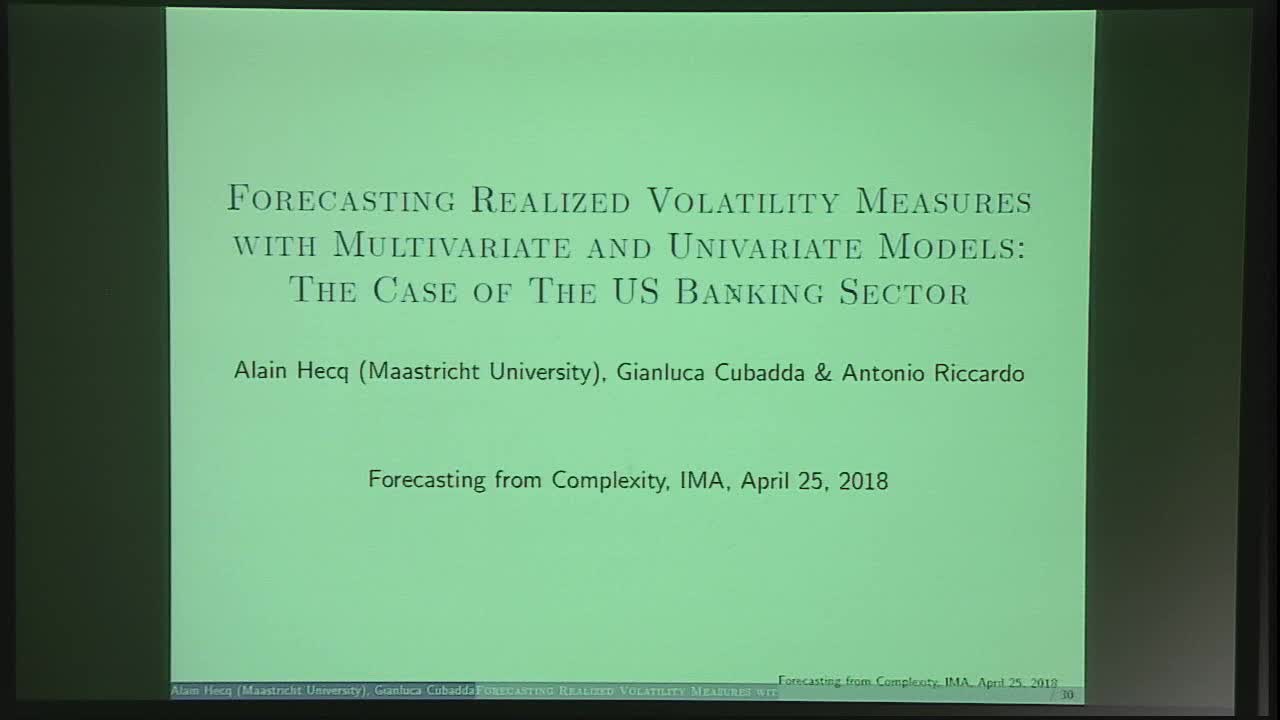Forecasting Realized Volatility Measures with Multivariate and Univariate Models: The Case of The US Banking Sector
Presenter
April 25, 2018
Keywords:
- Common volatility, long-memory processes, HAR models, index models, forecasting
Abstract
This paper aims at evaluating the forecasting performances of a set of univariate fractional white noise processes versus multivariate factor models for realized volatility measures. The literature on the sources of long-memory is quite large, from the aggregation across heterogeneous series to the impact of structural changes that spuriously lead to the detection of fractional integrated process. Alternatively, Chevillon, Hecq and Laurent (2018) investigate the mechanisms underlying the long-memory feature generated from large vector autoregressive models. For n→∞, namely when the number of series increases, each marginalized individual series is a fractional white noise processes with the same d parameter. On the other hand though, many papers have also documented the existence of co-movements in the volatility of asset returns. In integrated markets, common factors in volatility are the result of a common reaction of investors, policy makers or central banks to news/shocks in some macroeconomic and financial variables. However, one important implication of Chevillon et al. (2018), is that the VAR is full rank n. This would obviously contradicts the presence of a particular form of commonalities, named common features in volatility, observed in the empirical literature. By comparing the forecasting accuracies of a set of individual series that have incorporated as a footprint the information of the high dimensional multivariate autoregressive model and several factor models we try to detect the underlying mechanisms that has generated realized volatilities of banking sector asset returns.
